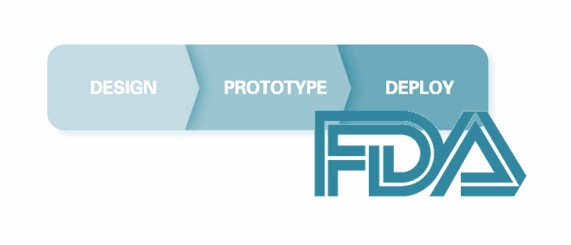FDA Validation of Medical Devices with NI Hardware and Software - FAQ
Overview
Contents
The first step in the development of a solution that will be used in conjunction with a medical device is to understand the regulations. In the end, the FDA makes the last call for a US based device- is the product safe for the public. It is your job as the device maker to prove to the FDA that you have performed due diligence to ensure product safety and quality.
Important FDA Guidance
Many designers are aware of the guidelines and requirements outlined by the FDA. Such documents include:
CFR21 Part820 – also known as a quality assurance (QA) process or good manufacturing practice (GMP), this guidance provides guidelines for design, development, test, and maintenance of a medical device.
CFR21 Part11 – is a regulation on the use of electronic signatures and retention of electronic records, validation of computer systems, data security, integrity, and confidentiality. The regulations impact the use of computer-based instrumentation in the area of I.D.s, passwords, and authorization of procedures in the lab.
FAQ
Below are common questions requested by customers of NI as it relates to Life-Science/Medical product design.
I am or want to be involved in the medical industry, where do I start?
NI’s tools are used as a part of many medical based applications. Our customers span large established companies to small university based research teams. An NI goal is to help educate existing medical device manufactures how to apply NI tools to their existing processes and company infrastructures, while also helping educate smaller companies or teams on how to apply NI tools in a way that align with medical good manufacturing practice.
A good place to start your learning process is to reference your government and local resources. In the US, you should reference the US Department of Health and Human Services web site for the Food and Drug Administration (FDA). Specifically, begin by reading the Device Advice: Device Regulation and Guidance documentation. The second step is to reference local and regional organizations that train or offer educational forums. An example includes the FDA Medical Device Industry Coalition.
As a designer or manufacture of medical products, the FDA states that you have some form of Quality Management System framework to define, communicate, measure, and improve your key company processes. Quality management applies not only to the medical application but also to any NI based system for test and design. In the medical industry common guidelines include ISO 9001 and ISO13485. ISO 13485 is generally associated with ISO 9001. A fundamental difference is that ISO 9001 requires your organization to demonstrate continuous improvement, whereas ISO 13485 requires only that you demonstrate the quality system is implemented and maintained.
Is NI ISO 9001 certified?
NI is an ISO 9001-certified company. It uses a Quality Management System framework to define, communicate, measure, and improve all key company processes to deliver high-quality, reliable products to NI customers. NI uses a defined process, the New Product Introduction (NPI) process, to take a product from concept to delivery, specifying the required steps that are followed in research, design, development, quality assurance, marketing, manufacturing, sales, and support. The company formally tracks this process in an online Oracle-based system. NI stores documents and source code in revision control systems and uses databases for all testing and issues tracking.
Is NI hardware/software FDA validated?
NI provides tools for engineers, not end devices. Therefore, it is the responsibility of the user to validate his/her use of the tools. There are many examples of FDA validated applications built with LabVIEW and other NI hardware and software components. The FDA provides guidance on use of off-the-shelf technologies in medical device design and test, and these can be found in the FDA guidance on Off-The-Shelf Software Use in Medical Devices.
NI offers upon request its Vendor Qualification of NI Software and Hardware Products document. In this document, NI summarizes and identifies information and services to assist medical device manufacturers in the following efforts:
• Evaluate and document NI and its products for the validation process, including quality criteria
• Use NI products in a safe and effective manner during medical device design and test
• Satisfy regulatory requirements for information in premarket submissions for off-the-shelf software and hardware components from NI
Where can I find more information about developing CFR21 Part11 compliant applications with LabVIEW?
The following application note discussed using LabVIEW to create CFR21 Part11 compliant applications.
What tools can I use to help me link to my existing or new QMS design process?
LabVIEW and NI hardware is used to build some of the largest and most complex applications in the world. Graphical dataflow, or G, is a complete programming language, requiring the same software engineering practices and disciplines as traditional text-based approaches. The managing software engineering with LabVIEW and NI Hardware site is dedicated to providing best practices for the application of software engineering tools and principles when developing in G in order to ensure quality and reliability. Use this site and the NI tools described as supporting functions to your quality system. NI also offers training material to help manage software and hardware design called Managing Software Engineering in LabVIEW.
Do I need to validate my test system?
Any test system that is used in the manufacturing and/or verification of a medical device must also be included in the validation process of that device. This means that the test code is subject to the same scrutiny with regards to development practices, change management, and documentation as the firmware of the device.
Where can I find help validating my design?
The NI Partner Network and the design focused members contain integrators with experience in achieving validation with NI products under FDA guidelines.
Next Steps
An NI Partner is a business entity independent from NI and has no agency or joint-venture relationship and does not form part of any business associations with NI.
